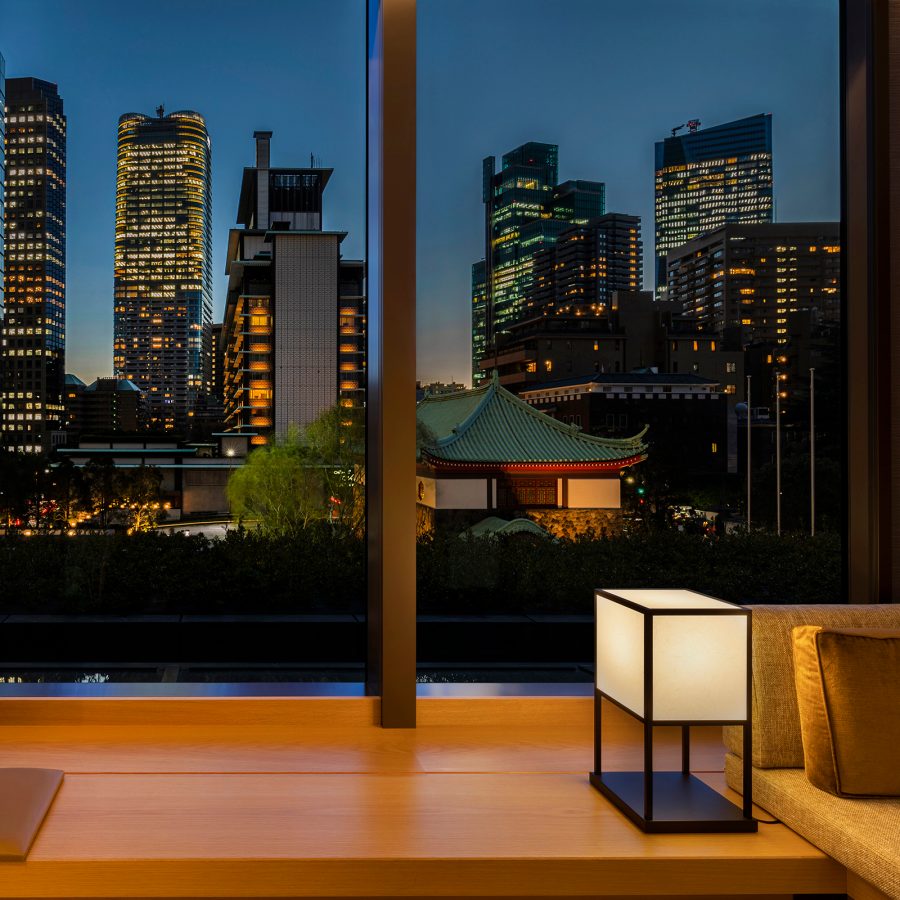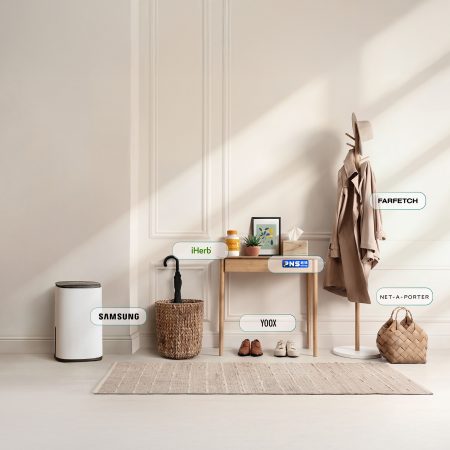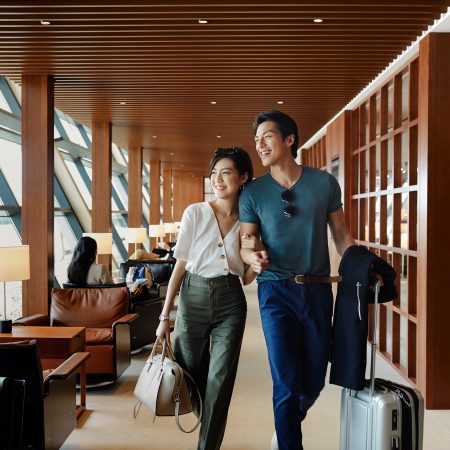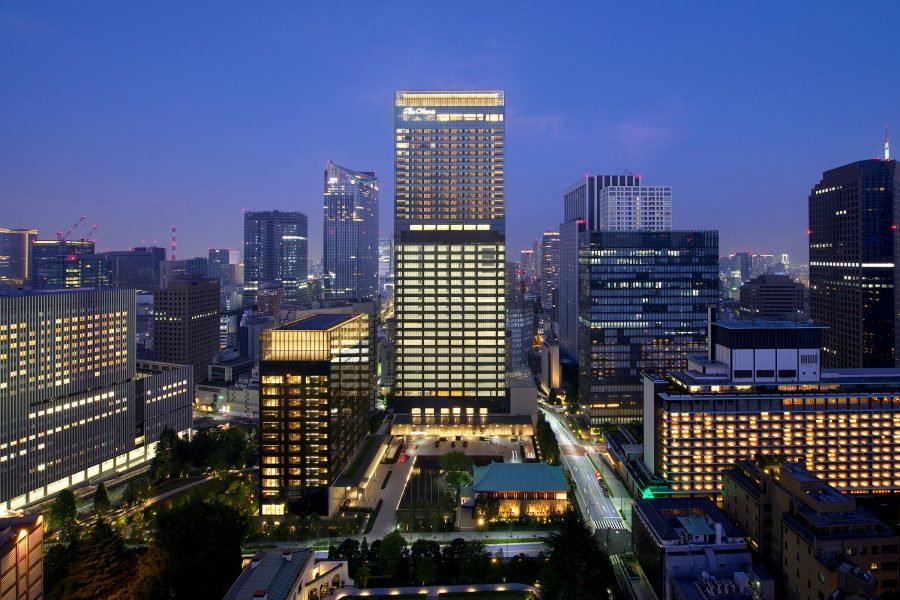What’s the deal?
Follow the path up from Ginza, past the glitzy new Toranomon Hills complex, and you’ll eventually reach The Okura Tokyo , a masterpiece of modernist Japanese architecture. It’s located opposite the US Embassy, and it’s hard not to think of all the high-profile guests that have stayed here over the years – from film stars and musicians to diplomats and heads of state.
Upon entering, the first thing that captures your attention is The Okura’s lobby. It has a warm and minimalist tone, and renowned designer Yoshiro Taniguchi’s original 1960s elements have been carefully preserved and incorporated throughout the 2019 renovations. The lobby boasts wood and kumiko lattice panelling, complete with plum and mustard lounge chairs arranged to resemble blossoms, alongside a retro clock on the back wall that gives a subtle nod to the past.
Despite the original property dating to 1962, the hotel was brought into the contemporary era in 2019 with two newly built towers: the Okura Heritage Wing honours traditional Japanese aesthetics and craftsmanship across its rooms and suites, while the adjacent Okura Prestige Tower channels sleek Tokyo modernity. Both offer the height of luxury for all types of travellers.

Credit: The Okura Tokyo

Credit: The Okura Tokyo
Why stay?
Most hotels try to strike a balance between the old and the new, but few succeed. The Okura is different and represents a paragon of restraint. As well as the tranquil ikebana arrangements and deep bathtubs with sky-high views, you can’t help but marvel at the hidden butler boxes in the Okura Heritage room – a secret compartment that staff members can access from the hallway without disturbing guests, slipping in the morning’s newspaper, your dry cleaning or room service.
We recommend splashing out on a room with a city view, which will afford you an awe-inspiring panorama of the Japanese metropolis beyond the sweeping windows. In the Heritage Wing, rooms are spacious and soothed by calming wood tones, while the diffused light from the washi paper lanterns falls beautifully across the king-size beds. In the taller Okura Prestige wing, cosy pewter-toned armchairs and desks overlook Tokyo Tower for a truly prestigious view.
The property’s cultural heritage is baked into its DNA, with a keen attention to detail that feels intuitive and natural, rather than simply tacked on. Beyond the meticulous and thoughtful recreation of Taniguchi’s iconic lobby, the work of master craftsman Sotoji Nakamura brings a striking intimacy to Japanese restaurant Yamazato, and a sense of Zen-like calm hangs over the place – a welcome departure from the shopping malls and pedestrian-filled sidewalks outside. Hydrangeas crowd around intimate dining room windows and wisteria blooms dangle over the Okura Heritage’s lobby. And as you’d expect, the service is impeccable, anticipatory and unintrusive.
Numerous dining options mean you’ll barely have to leave the hotel for a memorable meal, with stunning views from teppanyaki temple Sazanka and sultry bar Starlight. Meanwhile Cantonese restaurant Toh-Ka-Lin and French restaurant Nouvelle Epoque bring a global focus to the scene.
Cathay editors say…
“It’s impossible to miss the Okura Museum of Art across the vast courtyard, with its striking traditional architecture and emerald kirizuma roof. As the oldest private museum in Japan, it’s filled with rare artefacts from Japanese businessman Okura Kihachiro’s (the father of Kishichiro Okura, who founded the Okura chain) personal trove of rare Buddhist iconography, samurai-era weapons, calligraphy and more. Tickets are complimentary for guests staying at The Okura Tokyo.”
More inspiration
Tokyo travel information
- China – the Chinese Mainland, Hong Kong SAR, Macao SAR and Taiwan Region
- Hong Kong SAR - English
- Chinese Mainland (China) - English
- Taiwan, China - English
- 香港特別行政區 - 繁體中文
- 中国內地 - 简体中文
- 中國台灣 - 繁體中文
- Africa
- South Africa - English
- Americas
- Canada - English
- Canada - Français
- United States - English
- Asia
- Bangladesh - English
- Korea - English
- Singapore - English
- Cambodia - English
- 한국 - 한국어
- Sri Lanka - English
- India - English
- Malaysia - English
- Thailand - English
- Indonesia - English
- Maldives - English
- ประเทศไทย - ภาษาไทย
- Indonesia - Bahasa Indonesia
- Myanmar - English
- Vietnam - English
- Japan - English
- Nepal - English
- Việt Nam - tiếng Việt
- 日本 - 日本語
- Philippines - English
- Australasia
- Australia - English
- New Zealand - English









